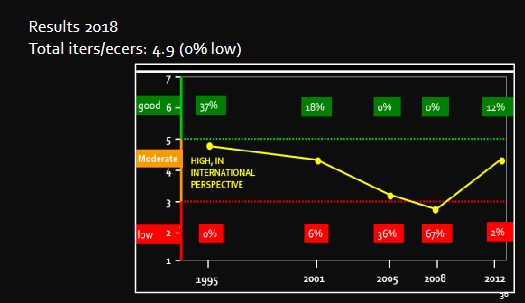Non-maternal care
0.0(0)
0.0(0)
Card Sorting
1/7
Earn XP
Description and Tags
Study Analytics
Name | Mastery | Learn | Test | Matching | Spaced |
|---|
No study sessions yet.
8 Terms
1
New cards
variables in the NICHD study of Early Childcare
child care quantity \= number of hours/month
child care quality \= primary care arrangements (\>10h)
parenting quality \= incl. sensitivity
child care quality \= primary care arrangements (\>10h)
parenting quality \= incl. sensitivity
2
New cards
outcome measures of the NICHD study of Early Childcare
- cognitive (memory, language, academic skills)
- social (competence, behavior problems)
- social (competence, behavior problems)
3
New cards
results of the NICHD study of Early Childcare
- no directing effect of non-parental care on children's attachment security (quality, quantity, type)
- interaction effects of maternal security with: poor quality child care, expensive hours in child care, \>1 child care arrangement
- interaction effects of maternal security with: poor quality child care, expensive hours in child care, \>1 child care arrangement
4
New cards
effects on attachment representation in adolescence
* small positive association between quality and secure attachment states of mind at 18
* even after controlling for covariates and parental sensitivity
* no sign. interactions among childcare variables found
→ substantial amounts of center-care hours increases risks of 'real' aggression
* even after controlling for covariates and parental sensitivity
* no sign. interactions among childcare variables found
→ substantial amounts of center-care hours increases risks of 'real' aggression
5
New cards
Caregiver Interaction Profile (NCKO)
1. sensitive responsiveness
2. respect for autonomy vs insensitiveness
3. structure and limit setting
4. verbal communication
5. stimulation of development
6. fostering positive peer interactions
(scored from 1-7)
2. respect for autonomy vs insensitiveness
3. structure and limit setting
4. verbal communication
5. stimulation of development
6. fostering positive peer interactions
(scored from 1-7)
6
New cards
LKK: quality of center care in NL

7
New cards
research findings on non-parental care
- children with high negative affectivity are affected by non-parental care
- evidence that children living in poverty benefit more than others from high quality ECE settings
- evidence that children living in poverty benefit more than others from high quality ECE settings
8
New cards
Adapting to non-parental care
Compared with insecure infants, secure infants have...
\
...lower cortisol levels during the adaptation phase
...higher fuss and cry levels during the adaptation phase
\
...lower cortisol levels during the adaptation phase
...higher fuss and cry levels during the adaptation phase